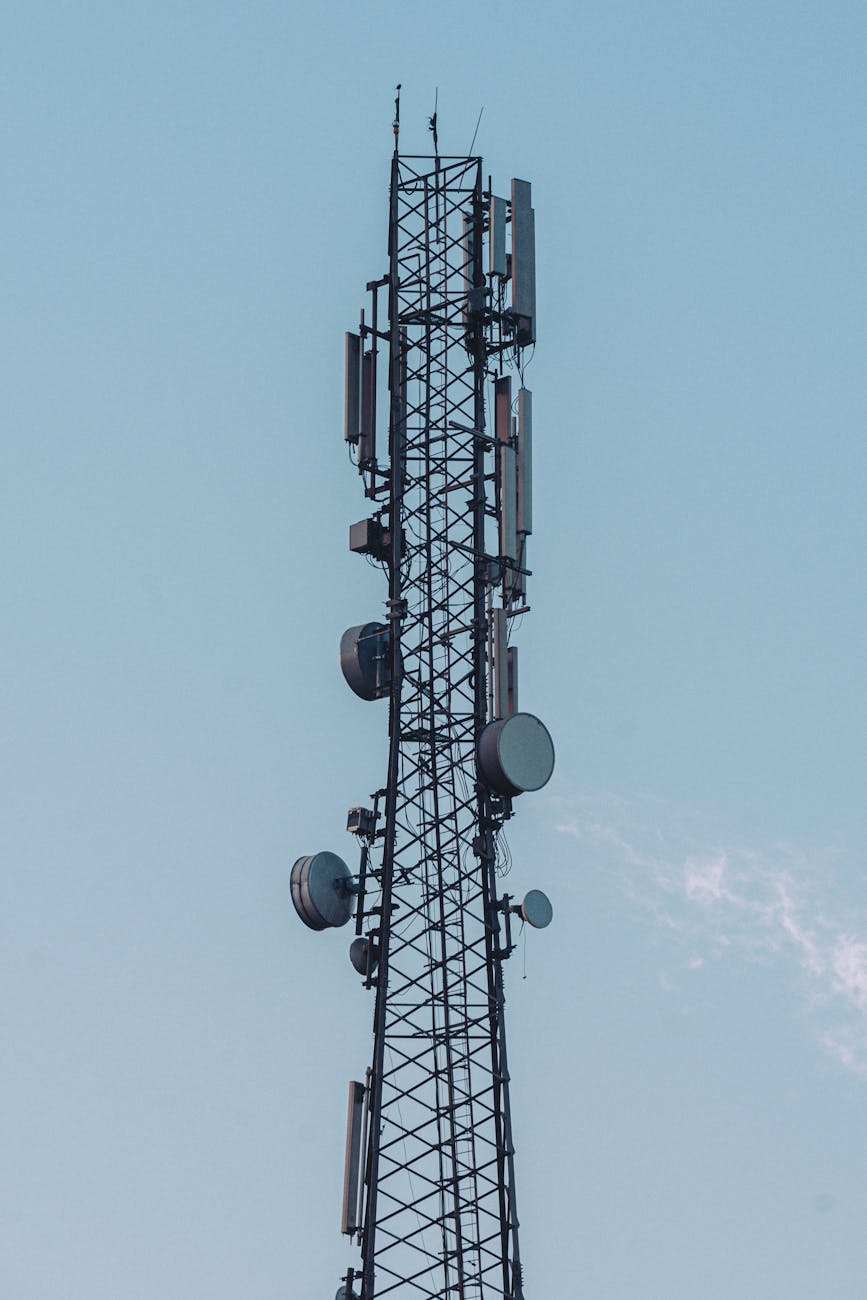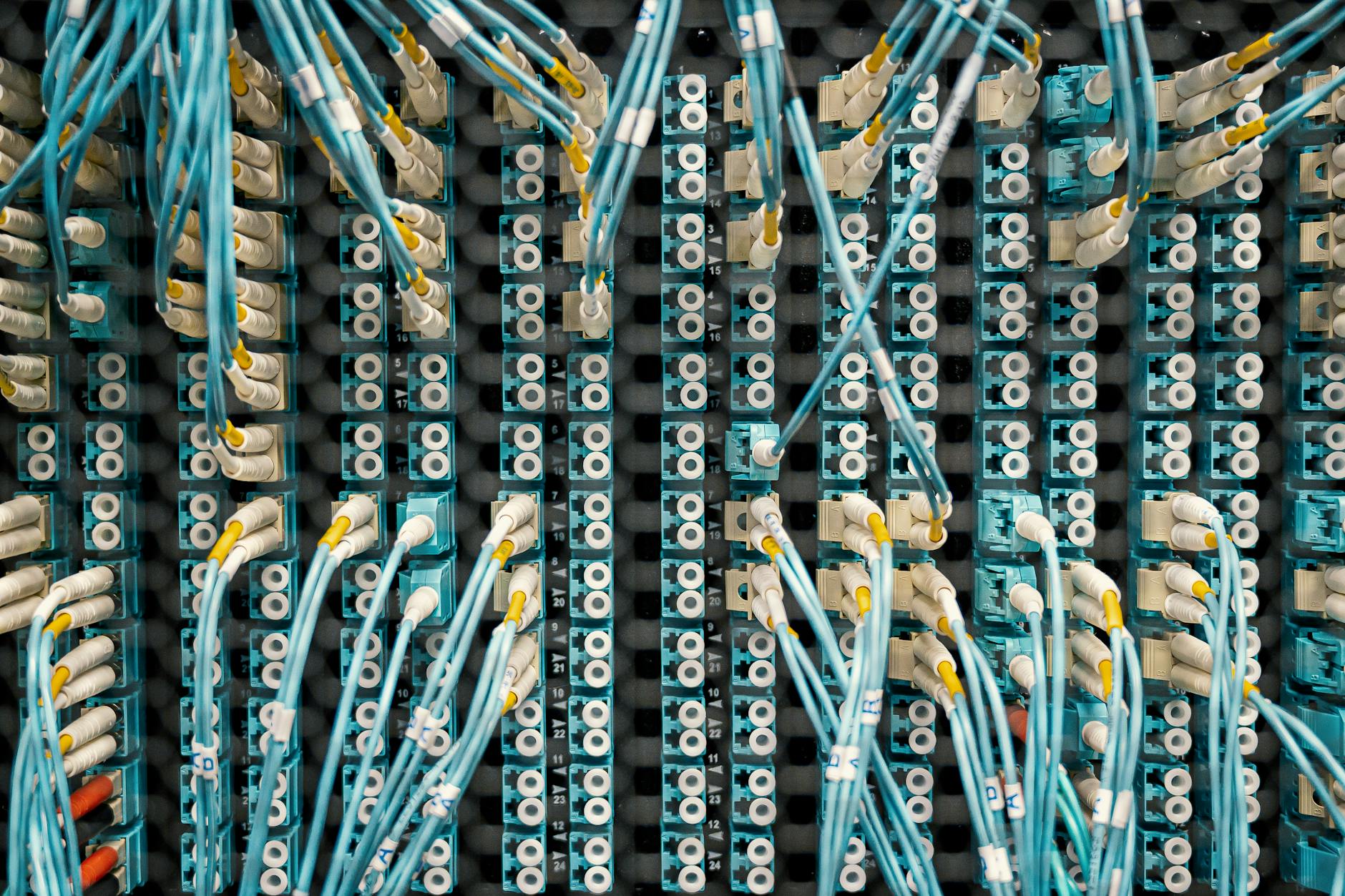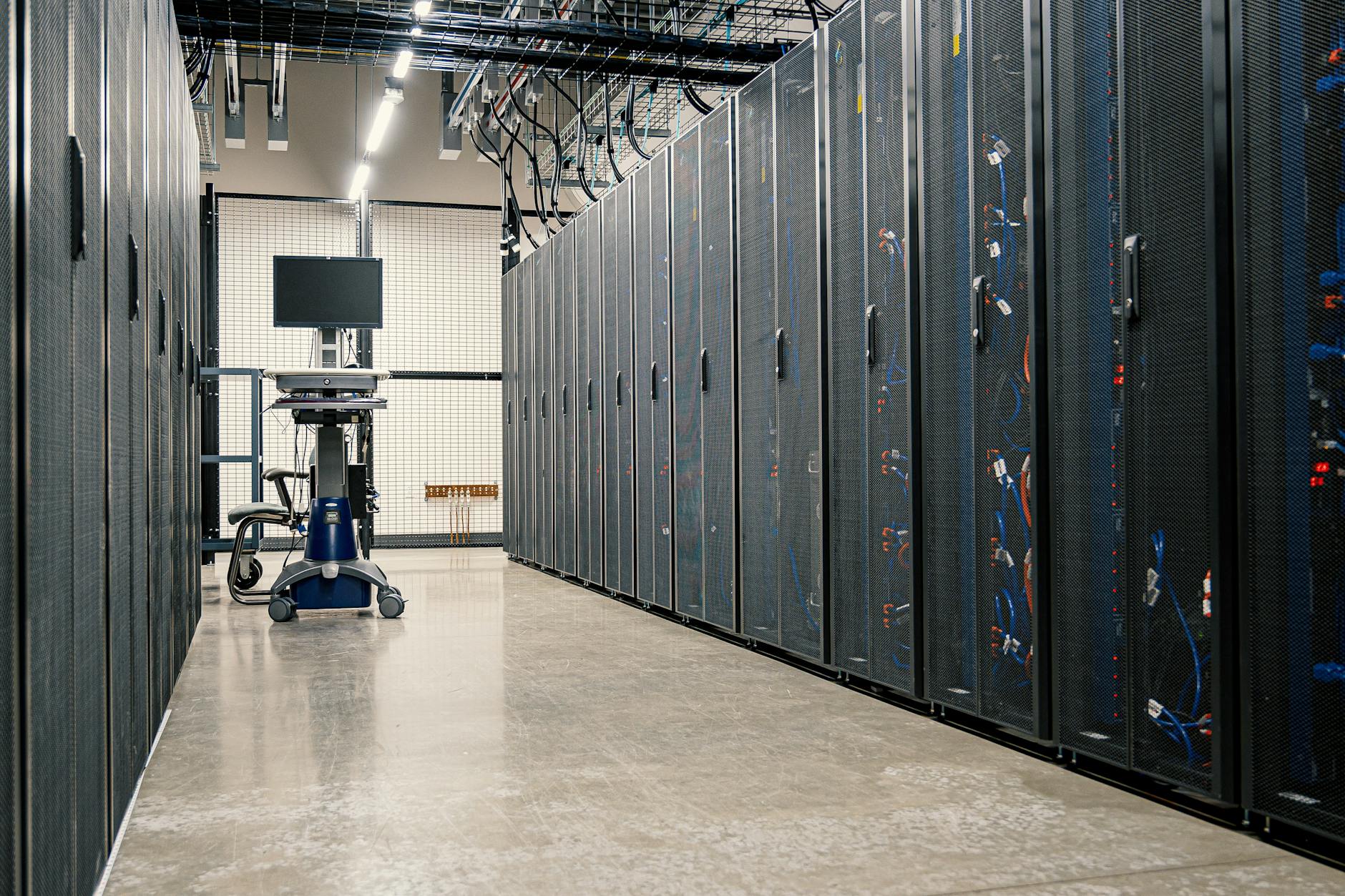Progress: Europe’s Dynamic 5G Network Development
5G Network Deployment in Europe
Europe’s sprint into the 5G era is like watching a sci-fi movie transitioning into reality. This section gives you the lowdown on where things stand with 5G adoption and its evolution across Europe.
Current Adoption Overview
By June 2022, Europe was racing neck-and-neck with the Americas in rolling out 5G. Many countries are speeding ahead, leaving mid-2020’s figures in the dust.
Not everyone surfs the web at the same speed, though. Internet highways across the region get pretty crowded with more users, dragging download speeds below 200 Mbps in a lot of places. But oh, some countries are zooming past:
| Country | Median 5G Download Speed (Mbps) |
|---|---|
| Bulgaria | 342.71 |
| Sweden | Over 200 |
| Cyprus | Over 200 |
| Finland | Over 200 |
| Denmark | Over 200 |
| Norway | Over 200 |
If you’re a data geek, we dissect these numbers further in our section on european internet network advancements.
European Progress Towards 5G
Europe’s dream of a super-tech future is sewn into the fabric of the EU’s Digital Decade strategy, aiming for blazing-fast gigabit connectivity by 2030 (European Commission). They’ve got the cavalry together, from businesses to project overseers, pushing for broader network reach.
| Initiative | Description |
|---|---|
| Digital Decade | Fueling gigabit and 5G connectivity dreams across Europe by 2030 |
| EU Electronic Communications Code | The legal stuff backing network growth and a robust digital economy |
| Connectivity Toolbox | The ultimate guide to rolling out fiber and 5G networks |
Hold on to your hats, as by 2025, Europe is set to pump around €225 billion annually into its economy just through 5G magic (ScienceDirect). Head over to our european digital transformation statistics for a deeper dive.
Europe’s also got serious about securing this tech playground, batting away any cyber gremlins. Eleven EU countries, including tech mastodon Germany, have barred Chinese suppliers like Huawei and ZTE from their crucial 5G frameworks.
Syncing national strategies with EU-wide policies, like the EU Electronic Communications Code, is non-negotiable in gunning for smooth 5G transitions. Dig into these strategies in our ipv6 implementation trends in europe.
For the economic nuts and bolts of 5G’s future, check out our blow-by-blow accounts in articles like data center growth in europe and more.
European Union’s Digital Vision
The Digital Decade Objectives
The Digital Decade’s big idea is for Europe to ride the tech wave without a hitch. The plan is all about ticking off some major goals by 2030, like getting everyone hooked up with gigabit internet and turning the whole continent into a 5G hotspot. The European Commission is throwing its weight behind this with a mix of rules and cashbags to keep the tech scene buzzing. This includes splurging on the guts of the internet, such as IPv6 protocols and epic data centers.
| Objective | Target Year |
|---|---|
| Gigabit Connectivity | 2030 |
| 5G Coverage | 2030 |
The idea here is to keep the gears of innovation well-oiled across the continent, focusing on juiced-up connectivity and network awesomeness (European Internet Network Advancements).
EU Electronic Communications Code
In 2018, the EU whipped up the EU Electronic Communications Code, a big rulebook for all things wireless and electrical within Europe. This code is about getting everyone singing the same tune, playing fair, and making sure nobody’s left in the lurch as Europe becomes a tech-friendly playground.
By 2022, you could say the Code became the new normal, with most EU countries mixing it into their usual operations. The big guns at the European Commission keep cheering everyone on to stick to the script. Here’s what the Code’s shooting for:
- Boosting competition and fresh thinking in the EU’s tech biz.
- Giving consumers more bang for their buck and deeper protections.
- Making sure all the radio waves get their fair share of airtime.
- Getting high-speed internet and 5G rolled out far and wide.
The Code is a treasure map for IT folks curious about how these rules are rebooting Europe’s tech playground. We’ve got all the nerdy numbers on this tech takeover over in our European Digital Transformation Statistics section.
As Europe gears up for a digital makeover, the EU’s rulebook and the Digital Decade plan are holding down the fort for newfangled internet gizmos and growth. For a deeper digital dive, check out our takes on IPv6 Implementation Trends in Europe and Data Center Growth in Europe.
Economic Impact of European 5G
Revenue Projections
Talk about a money train coming straight through Europe—5G’s bringing the thunder! Scientists mulling over at ScienceDirect reckon that by the time 2025 swings around, Europe might just claim a hefty 30% of all the moolah globetrotting from 5G. That’s got to tickle the economy’s funny bone, especially when it slots 5G right at the top of the tech totem pole. Check out the figures below. Just imagine what more we could do if we had Mars as a market!
| Year | Global 5G Revenue ($B) | Europe’s Slice (%) | Europe’s Cash ($B) |
|---|---|---|---|
| 2023 | 500 | 25 | 125 |
| 2024 | 600 | 28 | 168 |
| 2025 | 750 | 30 | 225 |
Economic Contributions
Zap! Europe’s 5G scene is set to supercharge economies by 2025, throwing a cool €225 billion into the pot yearly, according to ScienceDirect. And it’s not all going into one big piggy bank—it’s spreading across healthcare, transport, manufacturing, and other bits and bobs. Europe’s gearing up for the big leagues with 5G as its secret weapon.
Helping to stitch together these digital dreams are policy wizards crafting public-private partnerships and rules juiced up with innovation vibes. These movie-style team-ups mean more folks throwing cash into the 5G pot and making way for Europe to strut its stuff globally.
| Sector | Annual Contribution (€B) |
|---|---|
| Healthcare | 50 |
| Transport | 60 |
| Manufacturing | 75 |
| Other Timely Tricks | 40 |
| Total | 225 |
Pop on the 5G specs and see industries morph. With lightning-fast data and super-low snooze times, 5G’s a game-changer for everything from surgery done by remote control in healthcare to driver-free cars taking a spin in transport.
Get clued up on how Europe’s strapping on its digital boots: peek at european digital transformation statistics or see what’s cooking with data center growth in europe.
Figuring out how 5G will shake up Europe gives IT wizards and the like to plan their next big move on this game board we call european internet network advancements. For some brain snacks on the wider ripple effects, tap into ipv6 implementation trends in europe.
Policy Initiities Fueling Growth
Help for Expanding Networks
The European Union’s firing on all cylinders to get more people connected through its Gigabit Society and Digital Decade plans. They’re all about getting every nook and cranny to join the 5G party. Sounds grand, right? These plans give a leg up to businesses, project bigwigs, and local authorities trying to get everyone on the digital bandwagon.
A standout effort is the Connectivity Toolbox. It’s got the lowdown on getting fiber and 5G up and running. Basically, it’s like a cheat sheet packed with the do’s and don’ts for whipping up high-speed internet across the land.
| Initiative | What’s the Deal? |
|---|---|
| Gigabit Society | All homes in Europe cruising at no less than a 100 Mbps download speed by 2025. |
| Digital Decade Goals | Pumping up advanced digital skills and ensuring everyone’s ace in digital by 2030. |
| Connectivity Toolbox | Tips and tricks for getting 5G and fiber in place lickety-split. |
Market Smarts and Healthy Competition
Get this: market smarts and fair play are big in Europe’s 5G rollout. The EU Electronic Communications Code’s busy setting the stage for a place where innovation thrives and investments roll in. Watchdogs are on the case, always checking to keep things on the up and up for everyone involved.
What’s on the board? Public-private partnerships and smart rules pushing those with bright ideas and dollar signs. This is essential to pump 5G juice into sectors like healthcare, transport, and making stuff.
Plus, Europe’s got its eye on the big picture. It’s teaming up with other regions to make sure that 5G globe-trots without a hitch (ScienceDirect). Curious about the economic side of things? Check out our article on european digital transformation statistics.
Put together, these moves make sure Europe stays at the cutting edge of 5G know-how, laying down the path for future booms and prosperity. Fancy a dive into IPv6 trends in Europe? Hit up our piece on ipv6 implementation trends in europe.
Future Trends in European 5G
Projected Growth
Europe’s gearing up for a 5G wave that’s set to make quite a splash. We’re talking about Europe snagging around 30% of the global 5G pie by 2025 (ScienceDirect). It’s like watching a high-stakes puzzle come together, with policy pushes, public and private sectors shaking hands, and new rules paving the way.
And it’s not just a tech playground; it’s a cash magnet too. The 5G network is ready to inject roughly €225 billion yearly into Europe’s wallet by 2025. All this moolah comes courtesy of 5G breathing new life into all sorts of businesses and fields.
| Year | Projected 5G Revenue Share (Global) | Projected Economic Contribution (€ billion) |
|---|---|---|
| 2025 | 30% | 225 |
Key Sectors Impacted
5G is about to shake things up across lots of fields, pushing for a switch to digital and a boost to how things work.
-
Healthcare
With 5G, you’re looking at a world where telemedicine’s the real deal, remote surgeries are smoother, and we can keep tabs on patients in real time. It means quicker, smarter healthcare when seconds count.
-
Transport
Transport’s in for a treat, with 5G making driverless cars more doable, traffic running better, and shipping getting a leg up. Major roads and railways are next in line for a connectivity bump by 2025.
-
Manufacturing
Industry 4.0’s about to hit high gear, as 5G lets machines talk to each other and factories smarten up. Think ramped-up productivity and standing tall in the global marketplace.
-
Utilities
5G-powered smart grids will turn on the smarts for energy use, monitor stuff from miles away, and make sure utilities keep clicking along efficiently and sustainably.
-
Entertainment and Media
Staying in just got a whole lot better. With 5G, stream speed is faster, virtual reality feels more real, and media’s way more interactive. Consumers can dive into richer content and make the most of it.
The European Commission’s big dreams are set on seeing 5G in every city, as well as major roads and train lines by 2025, aiming for everywhere people live by 2030. It’s a bold vision pushing to ensure everyone’s got access to the fast lane.
Europe’s zooming ahead with its 5G rollout, playing a central role in its grand plan to go digital. It’s a huge driver for innovation, investment, and cross-border team-ups. Europe’s not just competing in the global arena; it’s aiming to be front and center. Want to learn more about Europe’s 5G journey and its economic punch? Check out our articles on European internet network advancements and the economic impact of 5G.
Security Measures in 5G Development
Ban on High-Risk Suppliers
The European Union is playing smart defense when it comes to securing 5G networks. They’ve put the brakes on some telecom suppliers teetering on the risky edge, zeroing in on outfits like Huawei and ZTE from China. By 2024, eleven EU nations put their foot down with measures limiting or outright banning these suppliers from their 5G setups.
| Country | Action Taken |
|---|---|
| Germany | Axing Huawei and ZTE gear by 2026 |
| Italy | Rolled the dice per case, blocked Fastweb’s Huawei deal |
| Sweden | Slammed the door on Huawei’s gadgets, out by 2025 |
| Slovenia | No total ban yet, tweaking laws for better security |
Take Germany as an example. They’re yanking out Huawei and ZTE pieces from the 5G backbone by the close of 2026. Why? To shield key networks and cut the strings with these suppliers.
Italy and Slovenia aren’t playing hardball with outright bans, but they’re keeping their rules flexible for network safety. Italy weighs each case individually and has shot down deals with risky suppliers in some situations.
Cybersecurity Toolbox Implementation
Europe’s serious about keeping its 5G networks under lock and key with the European Commission rolling out a 5G Cybersecurity Toolbox in 2020. This toolbox is packed with down-to-earth guidelines to fend off risks linked with 5G, including those sneaky hybrid and cyber attacks.
The Cybersecurity Toolbox zeros in on main points:
- Risk Assessments: Pore over the 5G structure to spot the Achilles’ heels.
- Diverse Supply Chains: Mixing up suppliers to dodge relying on just one, especially if they give the jitters.
- Network Monitoring: Top-notch scanning systems to catch and tackle threats on the fly.
- Regulatory Measures: Urging member countries to fine-tune laws matching the EU’s cybersecurity benchmarks.
| Cybersecurity Measure | Purpose |
|---|---|
| Risk Assessments | Sniff out and fix weak spots |
| Diverse Supply Chains | Don’t put all your eggs in one supplier’s basket |
| Network Monitoring | Quick-on-the-draw threat busting |
| Regulatory Measures | Sync local laws with EU guidelines |
These tactics are dialed in to make sure Europe’s 5G is tough and ready to square up against potential cyber nasties. Nations like Germany are already jumping on these practices, working alongside dependable manufacturers to keep their networks safe.
Rolling out the Cybersecurity Toolbox is a big leap towards hitting the EU’s digital transformation goals, ensuring Europe’s 5G networks are as steel-clad as they are snap-happy. Dive into the nitty-gritty of Europe’s digital leap over at european internet network advancements.
European vs. Global 5G Development
Collaborations and Partnerships
Across the pond, Europe is clicking with various collaborations to speed up spreading 5G tech and keep its top spot in the worldwide digital game. The European Commission is all about supporting EU businesses, project leaders, and officials, boosting network reach to hit those Gigabit Society and Digital Decade bullseyes (European Commission).
Among these partnerships, there’s a mix of public-private undertakings, policies revved up for innovation, and a sprinkle of funding from governments and the private sector (ScienceDirect). This team effort aims to sharpen Europe’s edge in the 5G scene while making sure the tech works smoothly across borders, adding some serious mojo to the region’s 5G evolution.
Interoperability and Innovation
Smooth service across the 5G scene is a must, and that’s where interoperability steps in. In Europe, there’s a code that nudges local powers to check in on markets and keep the game fair (European Commission).
Keeping ahead, Europe’s got its eye on the prize with building new tech and spreading 5G from city centers to highways and railways, and eventually to all bustling places by 2030. Pulling this off needs a load of cash and rules that grease the wheels for network folks to invest.
| Objective | Target Year |
|---|---|
| 5G in Urban Areas | 2025 |
| 5G on Major Roads and Railways | 2025 |
| 5G in Populated Areas | 2030 |
To crank up the 5G network, operators are giving old-school networks the boot. So far, 21 operators in 11 European lands are pulling the plug on 3G, with plans to wave bye-bye to 2G on the horizon. This frees up resources to beef up 5G coverage.
The blend of European and worldwide 5G efforts is driving fresh ideas and tech leaps. To peek into more detailed moves, check out the buzz on european internet network advancements and data center growth in Europe.
Network Optimization and Expansion
As Europe zooms ahead in the quest for 5G greatness, dusting off old networks and ramping up coverage are all part of the game plan. The spotlight’s on ditching what’s been outlived and casting that 5G net far and wide to hit those lofty goals.
Legacy Network Retirements
Bidding farewell to the musty networks of yesteryear is step one for getting Europe’s 5G groove on. Word on the street is that 21 operators in 11 countries have already started punking out their 3G setups. And yep, 2G’s days are numbered, too.
| Network Type | Status | Countries Involved |
|---|---|---|
| 3G | Shutdown Initiated | 11 |
| 2G | Planned Shutdown | – |
The move is powered by:
- Reduced Traffic: With hardly any folks still riding the 3G wave, operators are giving it the cold shoulder.
- Cost Savings: Tossing out the old gear means slashing the bills attached to keeping those dinosaurs alive.
- Boosted Efficiency: Putting time and cash into the latest tech instead of the old clunker gives way to turbocharged networks.
Extending 5G Coverage Objectives
Europe’s playing hardball with some bold 5G expansion targets:
- By 2025: Get 5G all over cities, main roads, and railways.
- By 2030: Blanket all inhabited spots with solid 5G.
| Year | Coverage Objective |
|---|---|
| 2025 | Urban areas, major roads, and railways |
| 2030 | All populated areas |
To hit these marks, it’s gonna take piles of cash and policies that play nice. What’s needed is:
- More Investment: Deep pockets are required to beef up the tech setup.
- Supportive Policies: Rules that are more Team Spirit than Red Tape, urging backers to chip in fairly—a bit of sharing the love for fairer network growth.
Discover more about the digital shake-ups in Europe with topics like european digital transformation statistics, data center growth in europe, and ipv6 implementation trends in europe.
By chucking the old and setting clear goals for coverage, Europe is beefing up their tech game plan, ensuring that 5G goes from dream to everyday norm, putting a rocket under the continent’s digital shift.













